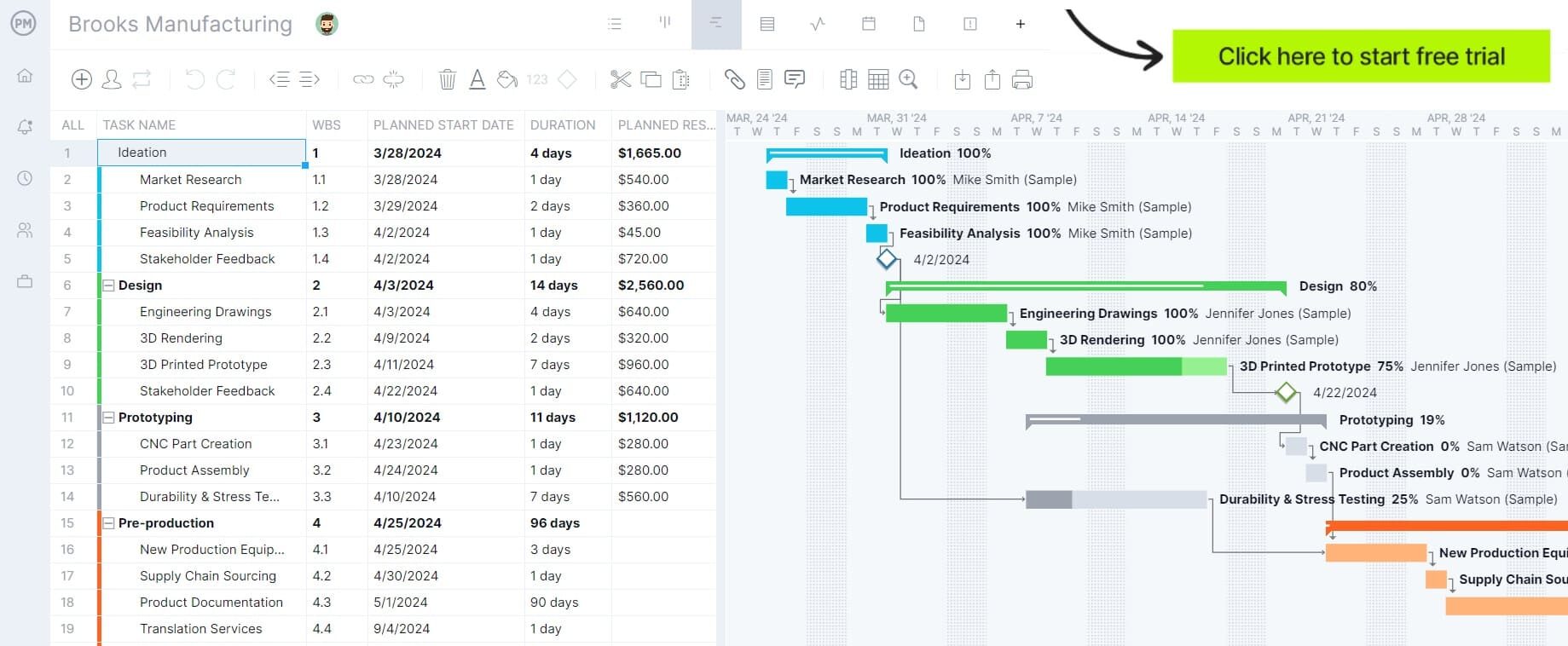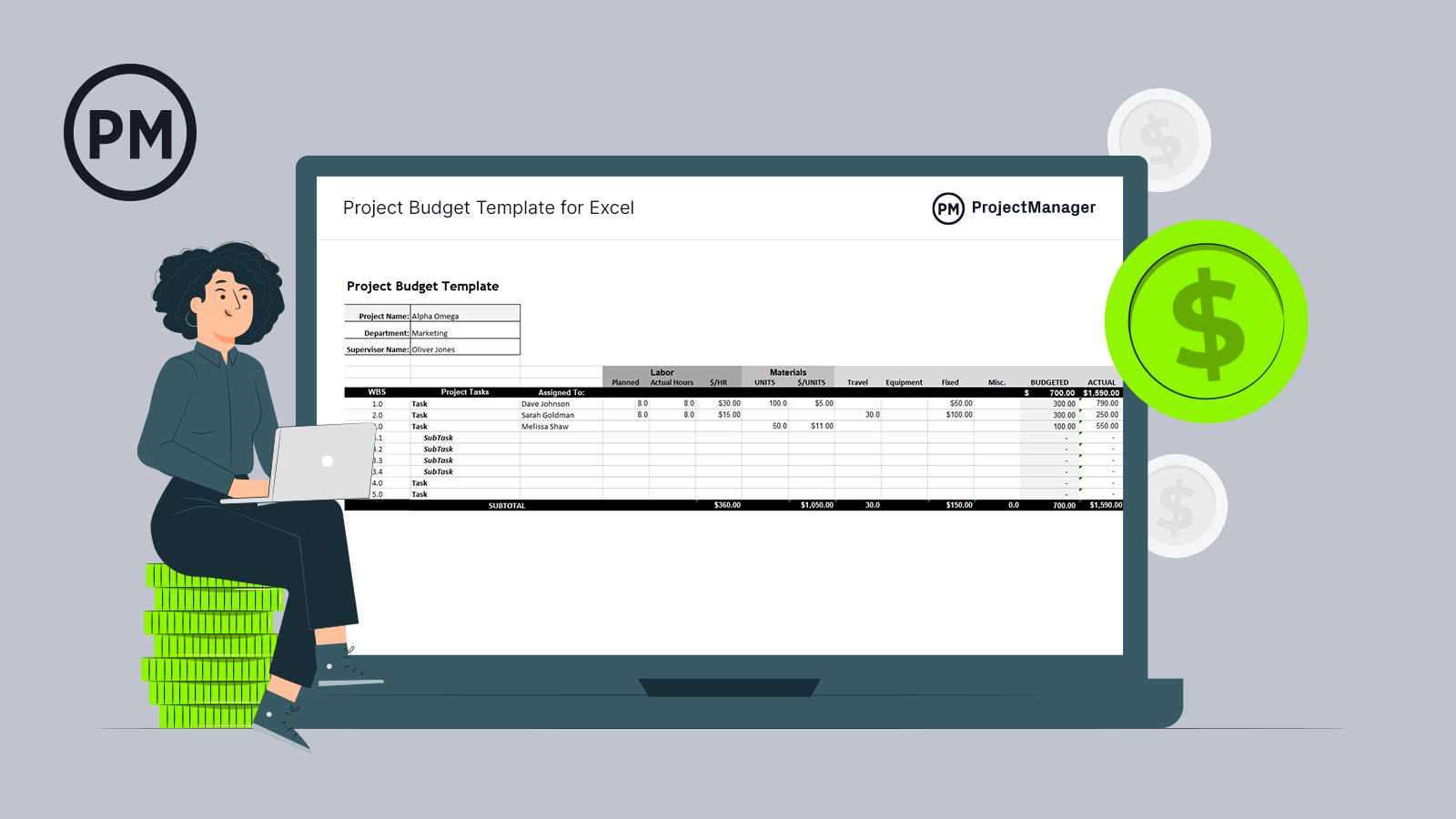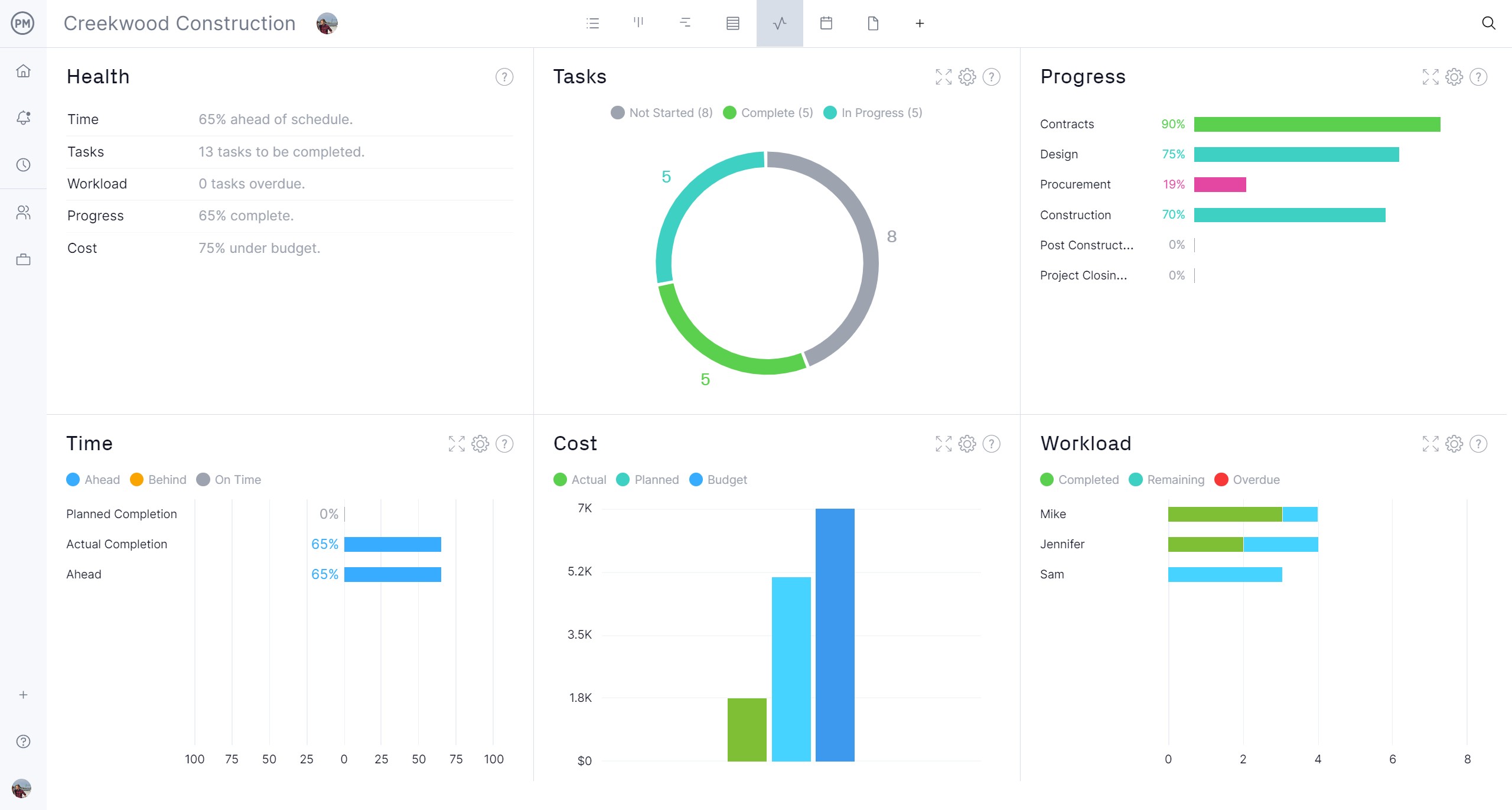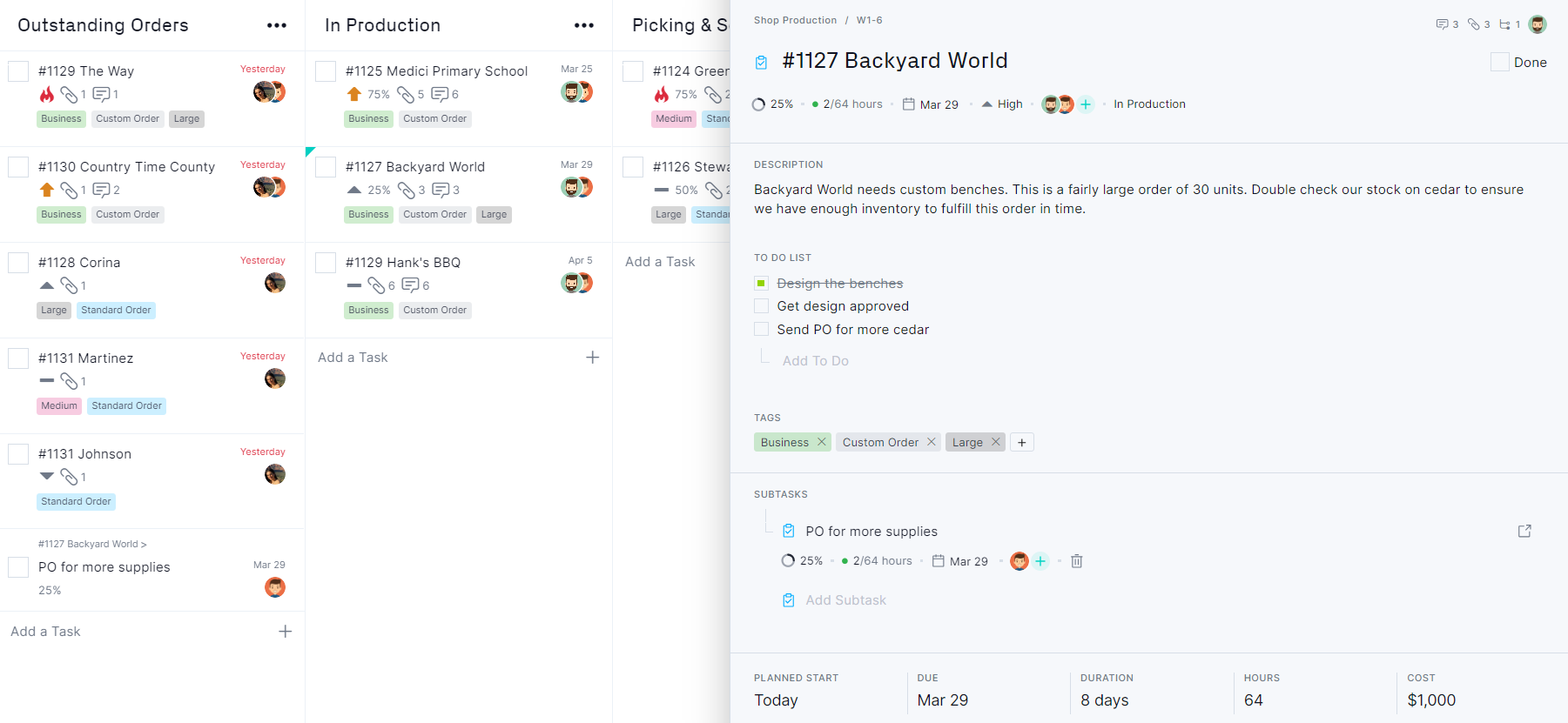Projects are planned, but those plans are rarely executed with changes. Those disruptions can play havoc on a project’s budget. Therefore, project managers are always tracking budget variance to deliver projects without breaking the bank.
We’ll define project variance below as well as what a budget variance analysis is. There’s a section explaining the importance of tracking budget variance in project management and different project aspects to consider when tracking budget variance.
What Is Budget Variance?
Before defining budget variance, let’s look at the meaning of variance. Variance is a measure of how data points differ from the mean. The definition comes from probability theory and statistics. In project management, budget variance quantifies the difference between the budget and the actual cost of executing the project.
Budget variance is one of the tracking tools project managers use to ensure that the project isn’t costing too much. Projects that go over budget have to request further funding, which isn’t always available, or, in the case of a construction project, when costs outrun the budget, it eats into the general contractor’s profit margin. Neither is preferable to keeping to or staying under the project budget.
There are two ways to express budget variance:
- Positive Budget Variance: When the actual cost of the project is lower than the budgeted amount, which is a positive sign of financial performance.
- Negative Budget Variance: When the actual costs are higher than the budgeted amount, which means the project finances are underperforming and require further investigation to learn why.
Using project management software can track budget variance. ProjectManager is award-winning project and portfolio management software with robust Gantt charts that can set a baseline to track budget variance in real time. Once a budget has been set for the project and human and nonhuman resource costs are defined for the tasks, just set a baseline to capture that budget and track planned costs against actual costs in real time. Get started with ProjectManager today for free.

What Is Budget Variance Analysis?
Project managers use budget variance analysis when managing projects. It’s a key technique that helps monitor and control project costs.
Budget variance analysis simply compares the actual costs of a project against what the project has been budgeted for. Using a budget variance analysis can help determine if the project is meeting its budget goals.
This helps make more informed decisions about further costs in the project. It also helps identify when the project costs are going over budget, which allows project managers to respond quickly by reallocating resources to get back on track.
Why Is It Important to Track Budget Variance in Project Management?
Project budgets aren’t arbitrary. They are what has been agreed upon as funding to deliver the product or service. First, the budget should have been accurately forecasted, which can be done with historical data, seeking experienced advice and more. Once that budget is finalized, the project costs must be monitored as it moves into the execution phase to ensure the project doesn’t go over budget.
Tracking budget variance not only helps project managers by letting them know if the project costs align with its budget but also allows them to see if there are any deviations. But by catching these areas of the project where actual costs are exceeding the budget, project managers can focus on them, uncover why costs are spiking and, when they do, work towards getting the project back on track.
There are other reasons for tracking budget variance; budget forecasts can change. Tracking budget variance can help identify those changes, whether they’re team-based assumptions on things that weren’t true, their estimates were poor, more work was added to or removed from the project, resources changed, etc.

Get your free
Project Budget Template
Use this free Project Budget Template for Excel to manage your projects better.
What Should Be Considered When Measuring Budget Variance?
There are many things to consider when measuring budget variance in a project. Anything that will cost the project or influence those costs will be under the purview of measuring project variance. Here are a few of those variables.
- Project Tasks: Activities that make up the project and produce the final deliverable, used when determining budget variance
- Resources: People, raw materials, equipment, etc., needed to execute project tasks
- Budgeted Costs: The estimated cost for delivering the project
- Actual Costs: The amount of money paid to deliver the project
- Cost Variance: The difference between expected and actual cost for the project
- Project Timeline and Task Due Dates: The schedule for the project is plotted on a timeline with deadlines for each task, which is used in calculating the budget variance
Budget Variance Formula
Now that we understand the various things to consider when measuring budget variance, let’s look at how budget variance is calculated. Simply take the project cost, or its budget, and subtract from it the actual cost of executing the project. The answer to that equation is the budget variance. Therefore, the budget variance formula is:
Project cost – actual cost = budget variance
Project Budget Variance Example
We’ve explored budget variance in the abstract. It’s time to look at the concept as it plays out in a project by illustrating tracking budget variance with an example. Let’s say Acme Construction has won a bid to build a garage with a budget of $250,000. Halfway through the project, they noticed by tracking the planned budget against the actual costs at that point that they have spent $150,000.
The general contractor sees that at that rate the project will go over budget, which means that the contractor will lose the profit margin or have to solicit more funds from the property owner. To remedy this situation, the contractor reallocates resources to have his crew and the subcontractors working on the job do their tasks more efficiently.
Tracking project budget variance again, the costs are now more aligned with the budget. By continuing to track the budget variance, the general contractor can keep the project on budget and, in so doing, maintain the profit that is built into that budget.
Project Budget Template
To see what that project budget variance example looks like on a real budget, download this free project budget template for Excel. It can be used to accurately estimate the project budget or play around with it and see how to track budget variance.

The free project budget template lists tasks and their associated labor, materials and miscellaneous costs. But there’s also a way to track project variance with a column for the budgeted, actual and balance, which shows if the project is in the red or not.
Common Causes of Budget Variance
There are generally four things to look out for when managing a project and trying to avoid the actual cost of executing it be more than the budgeted cost. Let’s look at some of the issues that project managers need to keep an eye out for.
Inaccurate Cost Estimation
Budgets are estimates. It forecasts the cost of the project as accurately as possible using a variety of techniques and the experience of those involved. However, it’s not an exact science. If the estimate wasn’t thorough enough or the calculation was poorly done, then the result is an imbalance in budget variance.
Changing Supply Prices
While project managers want to tie down suppliers and vendors with contracts that lock in the price they pay, there are often market powers beyond control that will impact these costs. If a certain raw material is contracted for, but there’s a supply chain shortage with no adequate substitute, then prices will change and impact the budget variance.
Low Performing Teams
Of course, budget forecasts could be spot on and supply chain issues nonexistent and still the actual cost of the project dwarfs the budget. That could be low-performing teams. If the wrong team is in place or even if the right one has been assembled, but they’re poorly managed or have low morale, it will negatively impact the project plan and its budget.
Scope Creep
Scope creep is when the project’s scope expands beyond what was originally planned without there being appropriate adjustments to the budget, schedule or resources. This will likely create delays, cost overruns and other issues that result in actual costs going over what had been budgeted for the project.
How ProjectManager Helps Track Project Variance
Use the project budget template to see how tracking budget variance works. However, templates are not great for managing budgets. They’re static documents that require someone to input data, which is labor-intensive and prone to human error. Project management software is a better tool. ProjectManager is award-winning project and portfolio management software that has robust Gantt charts that capture human and nonhuman resource costs, can set a baseline and track planned against actual costs in real time.
Track Costs at the Task Level With Multiple Project Views
The Gantt chart is a great planning and scheduling tool, but it’s only one of multiple project views available to manage projects. There are kanban boards that visualize workflow, task lists to focus on work and the sheet view, which is a spreadsheet. All of those views allow users to track budget variance at the task level. Hourly costs can be tracked on tasks. By cost tracking data, such as labor, materials, etc., helps to keep projects from going over budget.

Monitor Project Budgets With Real-Time Dashboards
Once a baseline has been set on the Gantt chart, budget variance can be tracked throughout the software. The real-time dashboards or portfolio dashboard that can track budget variance in projects and portfolios. Get a high-level view of key performance indicators (KPIs), including actual, planned and budgeted costs in an easy-to-read, colorful bar chart. Unlike lightweight alternative tools, there’s no time-consuming and complicated setup required. Jut toggle over to the dashboard whenever you need to check on costs.

For a more detailed look at progress and performance, use the customizable reporting tools. Reports on variance, among others, can be generated with a keystroke. There are also status, portfolio, timesheet (to track labor costs), workload and more reports. All can be filtered to show only the data you want to see and then shared across several formats with stakeholders to keep them informed.
ProjectManager is online project and portfolio management software that connects teams whether they’re in the office or out in the field. They can share files, comment at the task level, track budget variance and more on any device, including the mobile app. Plus, email and in-app notifications keeps everyone up to date. Join teams at Avis, Nestle and Siemens who use our software to deliver success. Get started with ProjectManager today for free.


